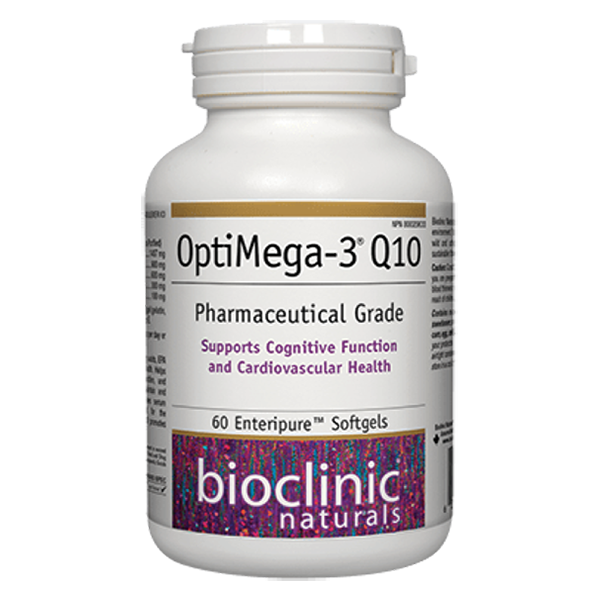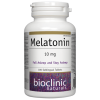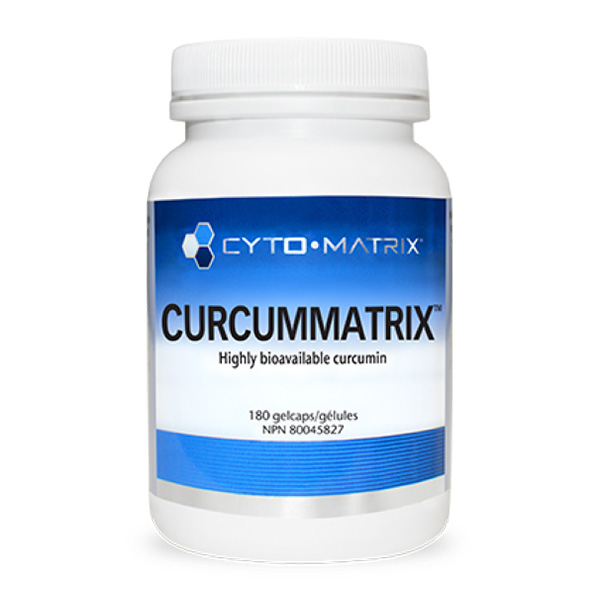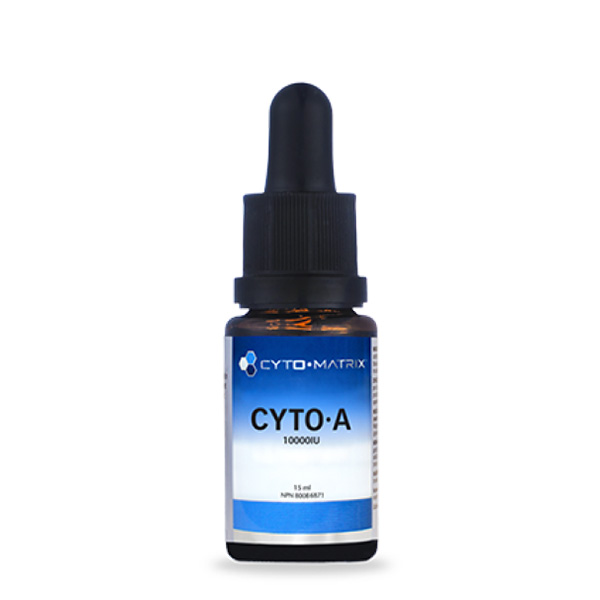Benefits
- Optimal 2:1 ratio EPA to DHA in a highly bioavailable softgel
- Provides 600 mg EPA, 300 mg DHA, and 100 mg CoQ10 per softgel
- Pharmaceutical grade omega-3 blend, USP verified for quality and consistency
- Free of lipid peroxides and environmental pollutants, including heavy metals, pesticides, dioxins, PCBs, and other harmful compounds
- Sourced from wild anchovies, sardines, and/or mackerel, some of the best natural sources of EPA and DHA
- Harvested through sustainable fishing practices
Feature Summary
This high potency combination of CoQ10 and the omega-3 fatty acids EPA/DHA provides cardiovascular and cognitive benefit through multiple distinct and overlapping pathways. Both CoQ10 and EPA/DHA have been shown to improve endothelial function, especially among populations at risk for atherosclerosis (elevated BMI, metabolic syndrome, smoking, hyperlipidemia), with clinically significant hypotensive and anti-atherogenic effects.1-5
CoQ10 has an instrumental role in oxidative phosphorylation and mitochondrial bioenergetics, critical to neuronal health and preventing the mitochondrial dysfunction that underlies numerous chronic diseases, including neurodegenerative disease.6 Additionally, recent data highlights CoQ10’s emerging role in reducing inflammation and insulin resistance, which are potent contributors to impaired cognitive function.7-9 Meta-analysis of randomized trials has shown CoQ10 and EPA/DHA supplementation reduces key biomarkers of inflammation, including C-reactive protein, TNF-alpha, and IL-6.10-12 CoQ10 serum levels have also been associated with neurological outcomes following ischemic stroke, as well as the risk for disabling dementia.13,14
OptiMega-3 Q10 also provides high dose pharmaceutical grade EPA/DHA, shown to reduce many cardiovascular risk factors and improve vascular function, with controlled clinical trials demonstrating a reduced rate of cardiovascular and coronary events, particularly in persons at high risk.15-19 Omega-3 fatty acids have been associated with reduced myocardial infarction, as well as stroke, with supplementation mitigating adverse changes to the left ventricle, myocardial fibrosis, and systemic inflammation following a myocardial infarction.20-23 EPA/DHA support cognitive function through multiple mechanisms, as both are indispensable to neuronal membranes, with lower levels found to be not only a marker for neurological disease but also a risk factor for cognitive impairment.24,25
Medicinal Ingredients
| Each EnteripureTM Softgel Contains: | |
| Fish Oil Concentrate (Molecularly Distilled, Ultra Purified) (Anchovy, Sardine and/or Mackerel) | 1407 mg |
| Omega-3 Fatty Acids | 900 mg |
| Eicosapentaenoic Acid (EPA) | 600 mg |
| Docosahexaenoic Acid (DHA) | 300 mg |
| Coenzyme Q10 (Microorganism) | 100 mg |
Non-Medicinal Ingredients
EnteripureTM softgel (gelatin,
glycerin, purified water, pectin), natural vitamin E.
Allergens:
Contains no artificial colours, preservatives, or
sweeteners; no dairy, sugar, wheat, gluten, yeast,
corn, egg, shellfish, salt, tree nuts, or GMOs.
Recommended Use:
Recommended Adult Dose: 1 softgel 3 times per day or
as directed by a health care practitioner.
Contraindications
Consult a health care practitioner prior to use if you are pregnant or breastfeeding, or if you are taking blood thinners or blood pressure medication. Keep out of reach of children.
Drug Interactions
Because fish oil has an antithrombotic effect, caution is advised for those on anticlotting, antiplatelet, or anti- coagulant medications, or those at high risk of bleeding. However, a multinational randomized and controlled trial found that fish oil did not increase perioperative bleeding, and it reduced the number of transfusions needed, and appeared to be associated with a lower risk of bleeding when given pre- and postoperatively.26,27 At doses greater than 3 g per day, hyperglycemia has been observed in diabetics and those with hypertriglyceridemia, close monitoring of patients on antidiabetic medication is recommended. Benefits have been shown when fish oil is taken with statins, SSRIs, anticonvulsants, and cytotoxic medications.28,29 CoQ10 resembles vitamin K structurally, and there is a potential interaction possible for those taking the anticoagulant Coumadin. Close monitoring of the INR is recommended with CoQ10 introduction in these patients.
- Miller, P.E., Van Elswyk, M., &Alexander, D.D. (2014). Long-chain omega-3 fatty acids eicosapentaenoic acid and docosahexaenoic acid and blood pressure: a meta-analysis of randomized controlled trials. Am J Hypertens, 27(7), 885-96.
- Zehr, K.R., &Walker, M.K. (2018). Omega-3 polyunsaturated fatty acids improve endothelial function in humans at risk for atherosclerosis: A review. Prostaglandins Other Lipid Mediat, 134, 131-40.
- Colussi, G., Catena, C., Novello, M., et al. (2017). Impact of omega-3 polyunsaturated fatty acids on vascular function and blood pressure: Relevance for cardiovascular outcomes. Nutr Metab Cardiovasc Di, 27(3), 191-200.
- Gao, L., Mao, Q., Cao, J., et al. (2012). Effects of coenzyme Q10 on vascular endothelial function in humans: a meta-analysis of randomized controlled trials. Atherosclerosis, 221(2), 311-6.
- Rosenfeldt, F.L., Haas, S.J., Krum, H., et al. (2007). Coenzyme Q10 in the treatment of hypertension: a meta-analysis of the clinical trials. J Hum Hypertens. 21(4), 297-306.
- Du, H., &Yan, S.S. (2010). Mitochondrial medicine for neurodegenerative diseases. Int J Biochem Cell Biol, 42(5), 560-72.
- Farsi, F., Mohammadshahi, M., Alavinejad, P., et al. (2016). Functions of Coenzyme Q10 Supplementation on Liver Enzymes, Markers of Systemic Inflammation, and Adipokines in Patients Affected by Nonalcoholic Fatty Liver Disease: A Double-Blind, Placebo-Controlled, Randomized Clinical Trial. J Am Coll Nut, 35(4), 346-53.
- de la Monte, S.M., &Tong, M. (2014). Brain metabolic dysfunction at the core of Alzheimer’s disease. Biochem Pharmacol. 88(4), 548-59.
- Yates, K.F., Sweat, V., Yau, P.L., et al. (2012). Impact of metabolic syndrome on cognition and brain: a selected review of the literature. Arterioscler Thromb Vasc Biol, 32(9), 2060-7.
10. Farsi, F., Heshmati, J., Keshtkar, A., et al. (2019). Can coenzyme Q10 supplementation effectively reduce human tumor necrosis factor-a and interleukin-6 levels in chronic inflammatory diseases? A systematic review and meta-analysis of randomized controlled trials. Pharmacol Res, 148, 104290.
11. Li, K., Huang, T., Zheng, J., et al. (2014). Effect of marine-derived n-3 polyunsaturated fatty acids on C-reactive protein, interleukin 6 and tumor necrosis factor a: a meta-analysis. PLoS One, 9(2), e88103. Published 2014 Feb 5.
12. Molfino, A., Amabile, M.I., Monti, M., et al. (2017). Omega-3 Polyunsaturated Fatty Acids in Critical Illness: Anti-Inflammatory, Proresolving, or Both?. Oxid Med Cell Longev, 2017, 5987082.
13. Simani, L., Ryan, F., Hashemifard, S., et al. (2018). Serum Coenzyme Q10 Is Associated with Clinical Neurological Outcomes in Acute Stroke Patients. J Mol Neurosci, 66(1), 53-58.
14. Yamagishi, K., Ikeda, A., Moriyama, Y., et al. (2014). Serum coenzyme Q10 and risk of disabling dementia: the Circulatory Risk in Communities Study (CIRCS). Atherosclerosis, 237(2), 400-3.
15. Delgado-Lista, J., Perez-Martinez, P., Lopez-Miranda, J., et al. (2012). Long chain omega-3 fatty acids and cardiovascular disease: a systematic review. Br J Nutr, 107 Suppl 2, S201-13.
16. Pischon, T., Hankinson, S.E., Hotamisligil, G.S., et al. (2003). Habitual dietary intake of omega-3 and omega-6 fatty acids in relation to inflammatory markers among US men and women. Circulation, 108(2), 155-60.
17. Swanson, D., Block, R., &Mousa, S.A. (2012). Omega-3 fatty acids EPA and DHA: health benefits throughout life. Adv Nutr, 3, 1-7.
18. Wang, C., Harris, W.S., Chung, M., et al. (2006). n-3 Fatty acids from fish or fish-oil supplements, but not alpha-linolenic acid, benefit cardiovascular disease outcomes in primary- and secondary-prevention studies: a systematic review. Am J Clin Nutr, 84(1), 5-17.
19. Saito, Y., Yokoyama, M., Origasa, H., et al. (2008). Effects of EPA on coronary artery disease in hypercholesterolemic patients with multiple risk factors: sub-analysis of primary prevention cases from the Japan EPA Lipid Intervention Study (JELIS). Atherosclerosis, 200(1), 135-40.
20. Pottala, J.V., Garg, S., Cohen, B.E., et al. (2010). Blood eicosapentaenoic and docosahexaenoic acids predict all-cause mortality in patients with stable coronary heart disease: the Heart and Soul study. Circ Cardiovasc Qual Outcomes, 3(4), 406-12.
21. Casula, M., Soranna, D., Catapano, A.L., et al. (2013). Long-term effect of high dose omega-3 fatty acid supplementation for secondary prevention of cardiovascular outcomes: A meta-analysis of randomized, placebo controlled trials. Atheroscler Suppl, 14(2), 243-51.
22. Tanaka, K., Ishikawa, Y., Yokoyama, M., et al. (2008). Reduction in the recurrence of stroke by eicosapentaenoic acid for hypercholesterolemic patients: subanalysis of the JELIS trial. Stroke, 39(7), 2052-8.
23. Heydari, B., Abdullah, S., Pottala, J.V., et al. (2016). Effect of Omega-3 Acid Ethyl Esters on Left Ventricular Remodeling After Acute Myocardial Infarction: The OMEGA-REMODEL Randomized Clinical Trial. Circulation, 134(5), 378-91.
24. Lin, P.Y., Chiu, C.C., Huang, S.Y., et al. (2012). A meta-analytic review of polyunsaturated fatty acid compositions in dementia. J Clin Psychiatry,73(9), 1245-54.
25. Dyall, S.C. (2015). Long-chain omega-3 fatty acids and the brain: a review of the independent and shared effects of EPA, DPA and DHA. Front Aging Neurosci, 7, 52.
26. Harris, W.S. (2007). Expert opinion: omega-3 fatty acids and bleeding-cause for concern? Am J Cardiol. 99(6A), 44C-6C.
27. Akintoye, E., Sethi, P., Harris, W.S., et al. (2018). Fish Oil and Perioperative Bleeding. Circ Cardiovasc Qual Outcomes, 11(11), e004584.
28. Toyama, K., Nishioka, T., Isshiki, A., et al. (2014). Eicosapentaenoic Acid combined with optimal statin therapy improves endothelial dysfunction in patients with coronary artery disease. Cardiovasc Drugs Ther. 28(1), 53-9.
29. Mischoulon, D., &Freeman, M.P. (2013). Omega-3 fatty acids in psychiatry. Psychiatr Clin North Am, 36(1), 15-23.
Related Documents
| Weight | 0.1 kg |
|---|












